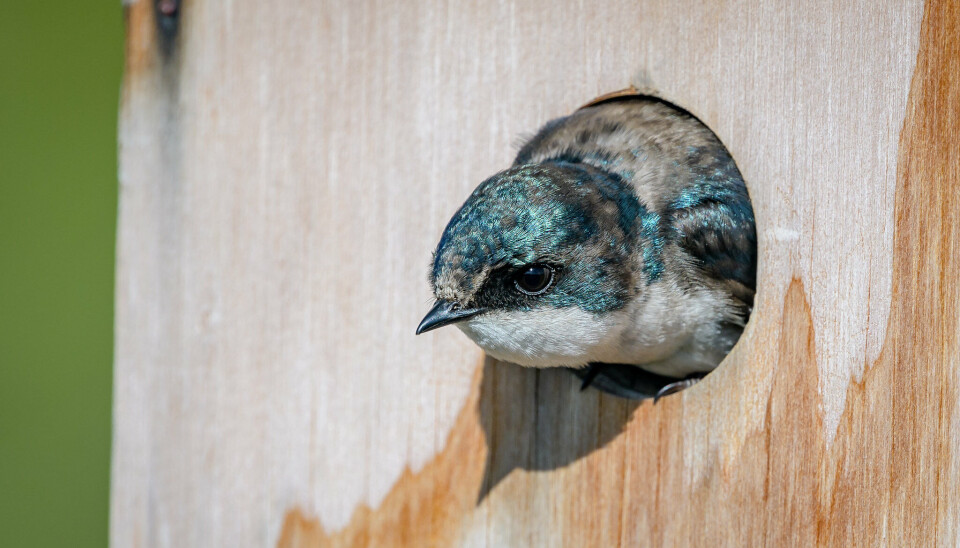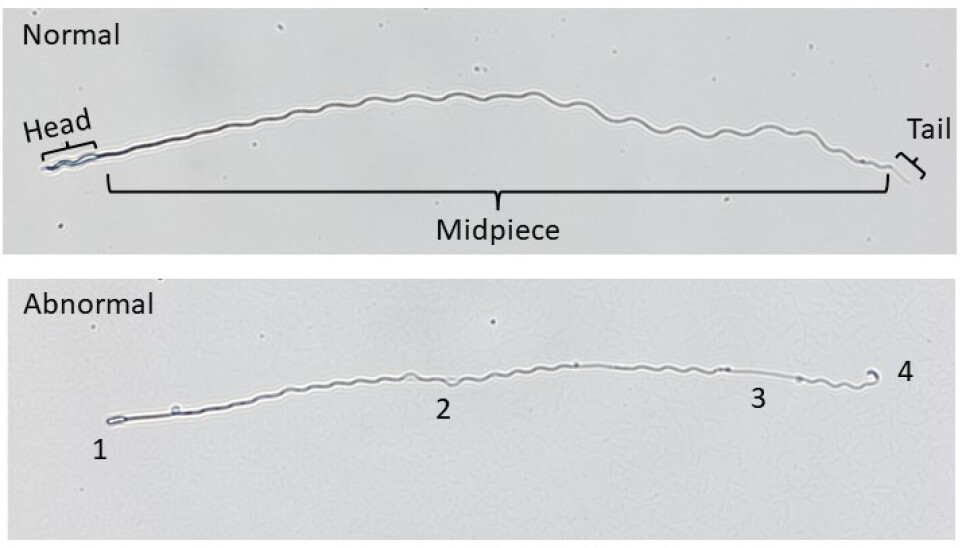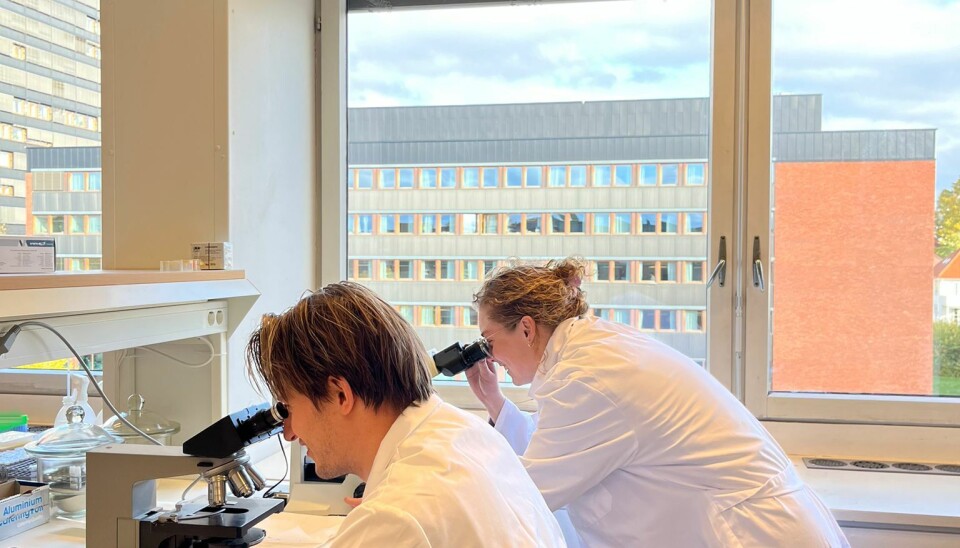
Blog: Natural Histories
Blog: natURAL HISTORIES

Do pollutants harm birds’ sperm cells?
Pollution reduces fertility in men. We tested whether it also affects sperm in the tree swallow, a North American songbird. The results were surprising.
Previous research has linked reproductive failures in the North American Tree swallow to pollution from industry, shipping and urban sources, at some locations. Yet until now no one has tested if pollutants induce sperm abnormality, which could in turn affect reproduction. We therefore needed to examine sperm collected from locations with different levels of pollutants.
To study the sperm, we used samples from the Avian Sperm Collection at the University of Oslo Natural History Museum (UiO NHM). One set of samples was collected from Hamilton Harbor, Canada, an industrial site loaded with a range of pollutants. The control samples were from the Queen’s University Biological Station, Canada (QUBS), an idyllic rural landscape of forests and hay fields.
7000 sperm cells examined

We predicted that the Hamilton samples would have more abnormal sperm. With funding support from UiO:Energy and Environment, I recruited two Masters’ students from UiO’s ecotoxicology program, Kiah Lee and Tengel Hvidsten, for the project. Over the course of the summer, Kiah and Tengel took pictures of over 7000 sperm cells through the microscope, then painstakingly and patiently identified which cells were morphologically normal.
Unexpected results

When we analyzed the data and removed the blinding to see which males were from which site, we were astounded by our results. Contrary to our expectations, the sperm were more abnormal in the “clean site” than the polluted site.
These unexpected results challenge our existing understanding of how pollution relates to sperm abnormalities. To fully understand this result, we need to conduct further studies on several points:
1. Impacts from winter habitats
Tree swallows migrate between breeding and wintering grounds, and conditions they experience during the winter might affect them during the breeding season. Though the data are imprecise, it appears that birds from eastern Canada all spend their winter together in Florida (USA) and Cuba. It is therefore unlikely that these birds experience differences in the wintering grounds that could explain the difference in sperm abnormality.
2. Exposure level to pollutants
Hamilton Harbor is polluted with many chemicals that accumulate in tree swallows’ bodies, but we did not measure how much pollution these individual birds were exposed to. Similarly, QUBS appears pristine, but it is possible that QUBS is more polluted than we think. Measuring pollutant levels in the birds would provide valuable insights into this question.
3. Comparative sperm abnormality rates
Unlike many prior studies that focus only on the sperm head, we examined abnormality separately for three sections of the sperm: the head (which contains the DNA), the midpiece (where energy is generated), and the flagellum (which pushes the cell forward). Abnormality rates in tree swallow heads and midpieces were typical of rates in other species, and much lower than levels found in the nuclear fallout zone around Chernobyl.
We didn’t find comparable studies on flagellum for other species, but suspect that our rates are high at both sites. More work is needed to provide context for this measurement.
Continued research into pollutants are necessary
Our discovery underscores the importance of continued research in this field to understand what levels of pollution, and what types of pollutants, are most harmful to birds’ sperm and reproduction.
Long-term monitoring studies suggest that tree swallow numbers are declining mostly because there are fewer aerial insects for them to eat. Understanding whether fertility problems also contribute would help for designing more targeted and effective conservation strategies.









